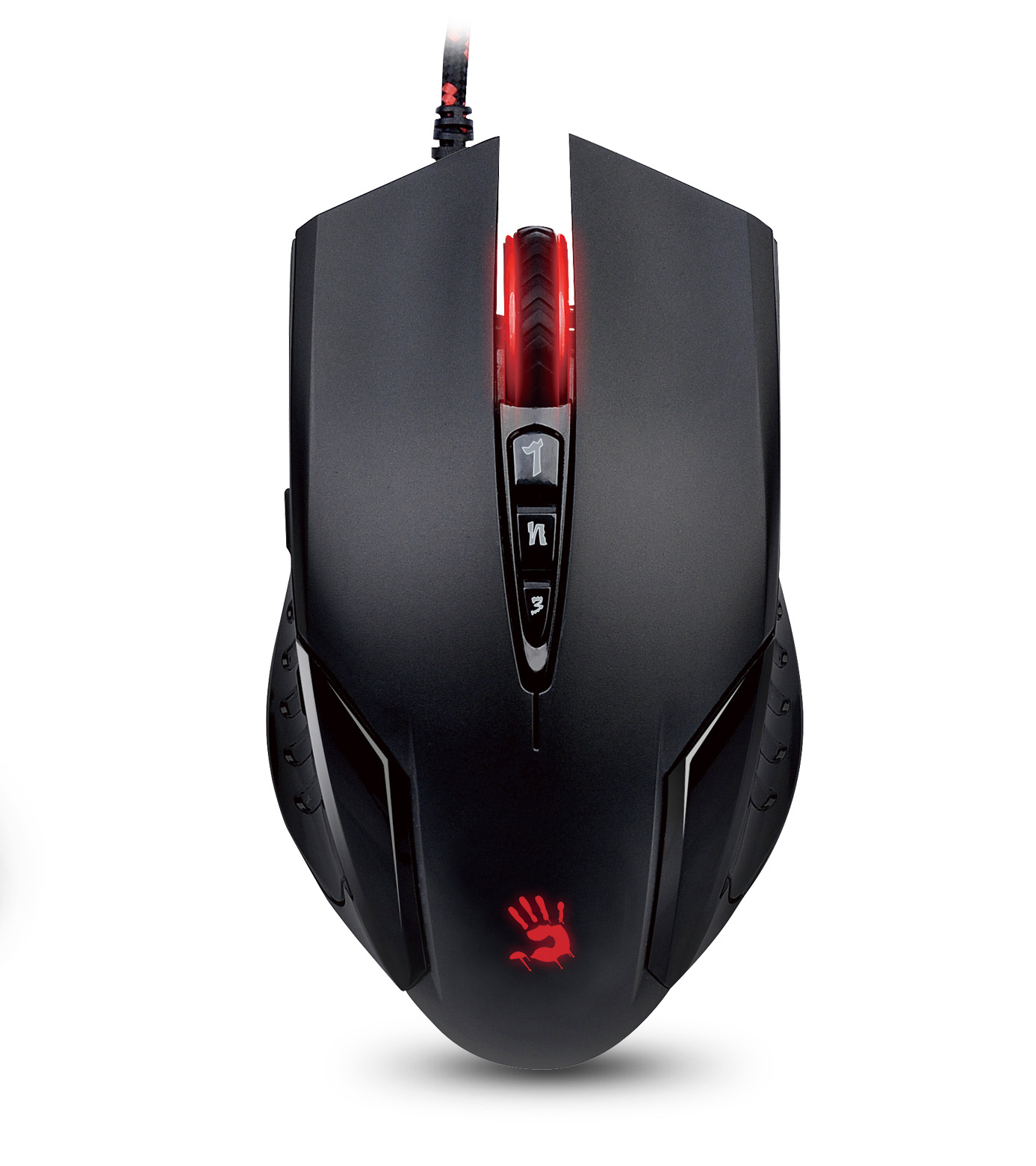Hands-on: A4Tech's Bloody Ultra Core 5 Mouse
Not quite what we'd hoped
If you’ve been involved with technology for long enough, you’re no stranger to poorly-translated documentation. Motherboard manuals, for example, are often riddled with random, confusing mistakes. To the people who read them though, such errors are rarely that big of a deal. Enthusiasts generally have enough experience to figure everything out on their own when necessary. I, for one, can’t remember the last time I consulted a component manual for anything more than jumper positions or error code meanings.
That was until I tried out A4TECH’s new Bloody Ultra Core 5.
When I first learned about the mouse, I read that it included some additional components and/or software that would help set firing patterns (single-shot versus burst), as well as help me adjust for recoil and strafing in first-person shooters. Whether or not you consider that cheating in a competitive game is up for debate. But, from a hardware reviewer's perspective, the technology sounds really neat.
Unfortunately, the Bloody Ultra Core 5 is not user-friendly, and it uses some pretty lazy shortcuts to achieve its claimed effects.
Using The Bloody Ultra Core 5
When you first plug in the mouse, you’ll probably notice that it's the opposite of sensitive (strange, particularly for a pointing device with a laser sensor). After a bit of fiddling around, I realized that the only solution to my problem was to use the included drivers. If you're like me, this makes your minimalism-loving stomach turn.
The software didn't help much, though. Besides the relatively poor and somewhat confusing instructions, I realized that, unlike most modern mice, the BUC5 doesn’t’ have a dedicated set of buttons for on-the-fly sensitivity adjustment. Instead, you double-click one key and then rotate the mouse wheel up or down to scroll through your presets. While it does feel a bit nit-picky to complain about that kind of thing, it’s really weird to see from what should be a higher-end mouse these days.
Get Tom's Hardware's best news and in-depth reviews, straight to your inbox.
Regardless, after getting most of the settings squared away, and learning how to turn on all of the mouse's fancy new features, I set out to play some games. I went to my Steam library and started searching for an FPS with recoil. Call of Duty had a few weapons that qualified, and they seemed to be severe enough to affect accuracy. I figured this would be a good place to start.
All that was left was to bust out a booming assault rifle and get to work creating nice, spurting fountains of blood using my opponents, right? Wrong.
After kicking in “Core 3” one button, triggering the oddly named “Strafe Mode”, and then shooting, my targeting reticle jerked downward rather sharply. “Someone’s a bit too happy to be doing his job,” I thought. I tried out some of the other “gun adjustment” modes, and they seemed to work as advertised, creating a burst fire mode on guns that didn’t initially have them, for example. An hour or two later, I closed the game and got to work writing this post.
I clicked to open my text editor and was greeted by three fresh windows. Apparently, the modes and features passed off as advanced and context-sensitive were largely a farce.
I reopened the software and found an extra settings tab called “Gun Adjustment,” which I hadn't noticed before. There, I saw a bunch of individual profiles for a variety of guns. Apparently, you have to manually create, manage, and adjust settings for individual games and guns. The mouse does not automatically analyze and then compensate for recoil, as I had initially thought.
After about 30 minutes of making fine adjustments, I did actually manage to get everything working pretty smoothly. The setup still isn't perfect, but the experience is quite a bit better than my first outing. In the BUC5’s defense, nothing in its supporting documentation explicitly says the mouse will automatically reduce the effects of recoil, but the device's marketing materials do claim a lot of its features work without additional software. That's not quite true. Yes, technically you can do everything without software. But you'd have no on-screen display to tell you what you’re doing, and there would still be no way to change the sensitivity settings.
This mouse isn't awful. It’s just confusing to set up, and a little weird to use. Its maximum sensitivity tops out at around 3,200 DPI, which, depending upon your monitor resolution, is on the lower end. A lack of dedicated sensitivity buttons perplexes me, through that alone isn't a deal-breaker.
Running somewhere between $30 and $40, though, it's hard to get too upset. The BUC 5 is quite a bit cheaper than its more familiar competition. The software, which is to say the bit that doesn't really work quite as advertised, is an additional $20. The device itself is worth consideration if you need a solid gaming mouse without having to troll Craigslist or eBay for an excellent deal on something a bit more full-featured.
-
janetonly42 Gimicky, more for the pimply teenager if you ask me. I'll stick with my trusty Logitech RF mouse with 2 thumb buttons reload and activate/use.Reply -
bipolargraph Can you please review the a4tech x7? I have a mouse just like it (rebranded as gigabyte gm-R04) and it's awesome, probably the best of the attech mouse line.Reply -
pyromatics I feel that because you were upset that you didnt understand how to use the software efficiently. It kind of shows in your review. I actually use the Bloody V7 and in Counterstrike the recoil adjustments actually make a difference.Reply -
cumi2k4 they're asking additional $20 for the software? really?Reply
so you're saying that i should just go and get logitech g400 for the same price, then...

